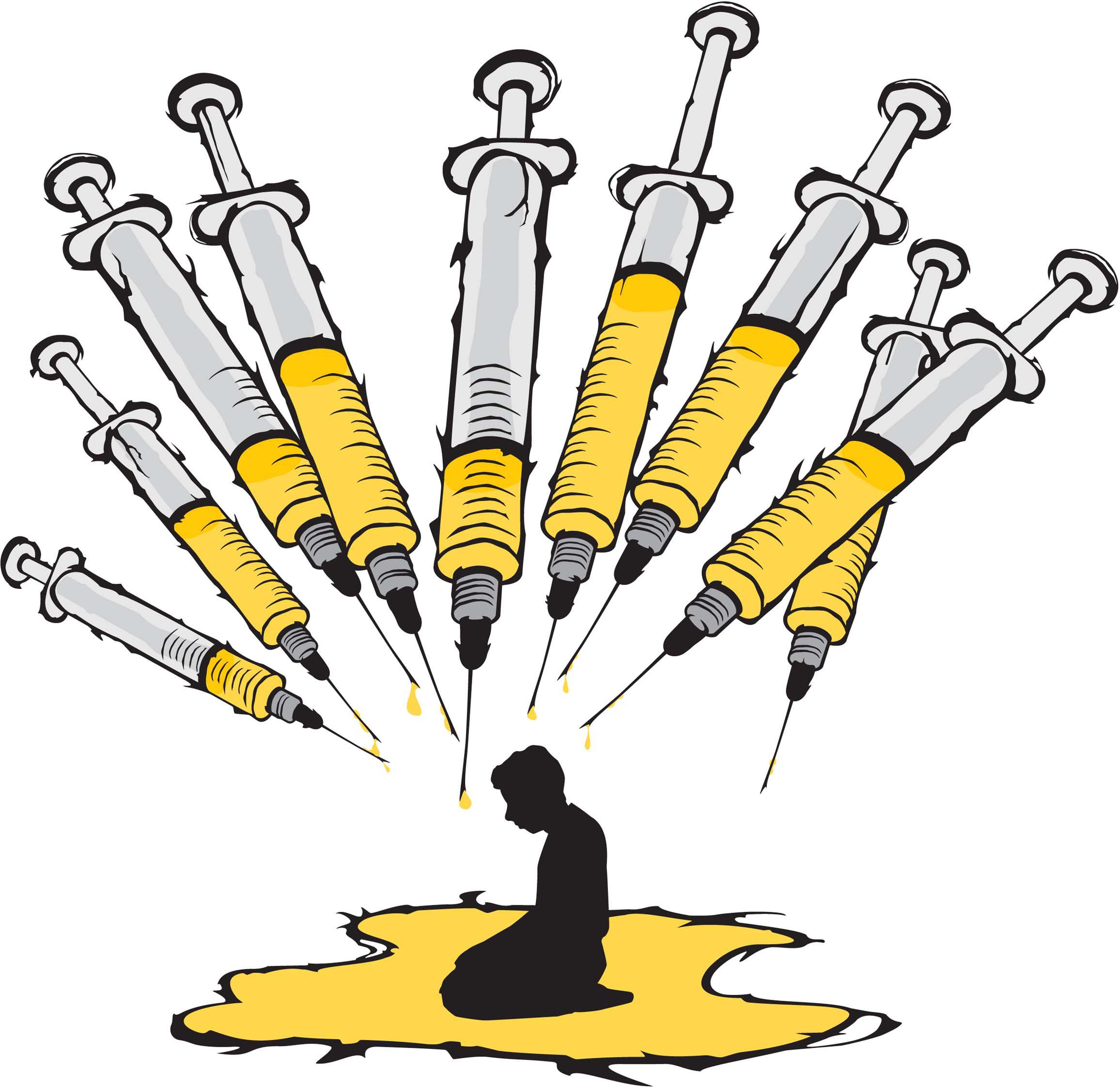California should be one of the first states to host harm reduction centers — otherwise known as drug-injection sites or drug consumption rooms — that would specifically allow addicts to use illegal drugs, such as heroin and crack, in supervised facilities.
Supporters cite success in Canadian centers established in 2003, but much of Europe and Australia have operated such facilities since the late 1980s.
There is something to say about viewing addiction as a mental health issue rather than a criminal issue and taking steps toward addressing it in a different manner in order to get better results.
These controlled rooms provide users with a safe and hygienic space to use substances purchased on the streets with the intent to remove drug use from the public sphere.
In the cities where these DCRs operate, the public benefits from the removal of discarded needles from the public eye, reduction in public intoxication and overdoses and the reduction in blood-born viruses transferred through dirty syringes.
But one of the main benefits to these programs lies in providing addicts with public health care and welfare services.
Opposition to the development of DCRs in the U.S. insist that establishing these supervised sites would send the wrong message and encourage drug use, which is like saying providing public ashtrays encourages people to smoke.
While there is a significant difference between the effects of nicotine and narcotics, the fact remains that people are going to smoke and they are going to use drugs, so we might as well stop running the mill on a failed abstinence-only philosophy and attempt to correct the issue in a different light.
Switzerland was the first to establish such a site in the city of Berne in 1986. It was built to address the global surge of HIV and AIDS by providing safe injection facilities that operated a needle exchange program, among other services.
Urban cities across the U.S. also ran needle exchange programs during this time in order to combat the virus’ spread, but they were operated underground because of the chasm in community understanding and support.
In 1992, the New York State Health Commissioner finally waived the ban on clean syringe exchange programs and the Lower East Side Harm Reduction Center and AIDS Coalition to Unleash Power won the battle to help those in desperate need of such programs only to be banned again in 1998 during the Clinton Administration, referring to the same worn moral argument.
While Bill Clinton is said to have supported the program, Congress was split and a battle ensued among party members.
This sort of bipartisan split is no different today, but Congress did pass a law in January 2016 revoking that same ban. Now, with the tide of national awareness changing, lawmakers are making moves to address what the Center for Disease Control and Prevention calls a “national epidemic.”
According to the CDC, the number of overdose-related deaths has quadrupled since 1999.
The U.S. spends $51 billion annually on the War on Drugs — that is $500 per second. Looking back, there has been $1 trillion spent since Richard Nixon enacted the policy in 1976.
Forty years later and not much progress has been made. Instead of spending our tax dollars on an ineffective war, the money would be better allocated to establishing harm reduction centers that do not treat their patients as enemies, but accept them as sick people in need of assistance.
Unlike those who say addicts deserve the ailments associated with their “immorality,” addicts do not deserve to be social pariahs.
According to a European drug policy program report, harm reduction centers have served as addicts’ first step toward treatment and rehabilitation programs, which directly contradicts the opposition’s fear of encouraging drug use.
Removing the muddled veil of morality reveals this as a public need that requires public service. But, as many reports in Europe have shown, the success of such centers relies on the full cooperation of each individual community in order make a difference.
Whether or not that can exist within the states at this time is to be determined, but at least we are heading in the right direction.





There are hundreds of major negative consequences to both the needle addict and to the surrounding community when a needle exchange program is introduced.
For example, discarded needles increase around playgrounds and parks where such programs exist. That means children are likely to be harmed by short-sighted virtue-signaling feel-good do-gooderism programs like this.
Become familiar with at least few of them, before supporting a program like this. Then carefully weigh the hundreds of negative long-term, short-term and medium-term consequences instead of weighing the immediate few positive ones.
Finally!!!!!!! Some sanity in this crazy world. This a great article.